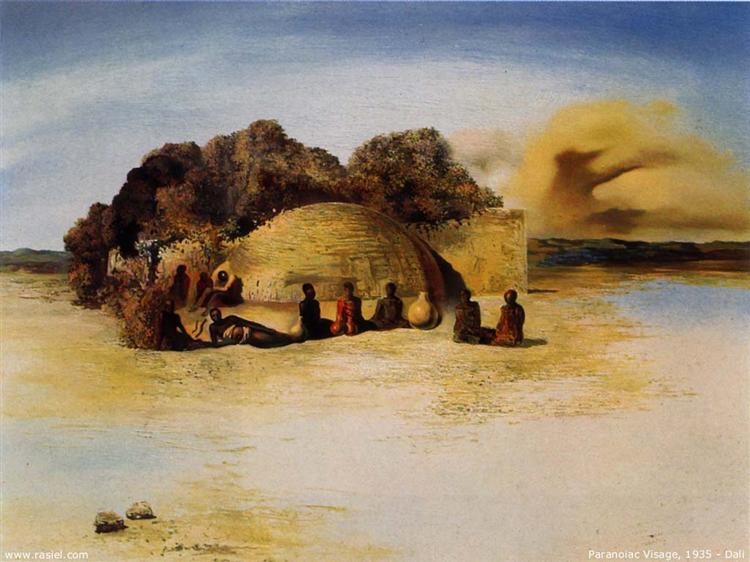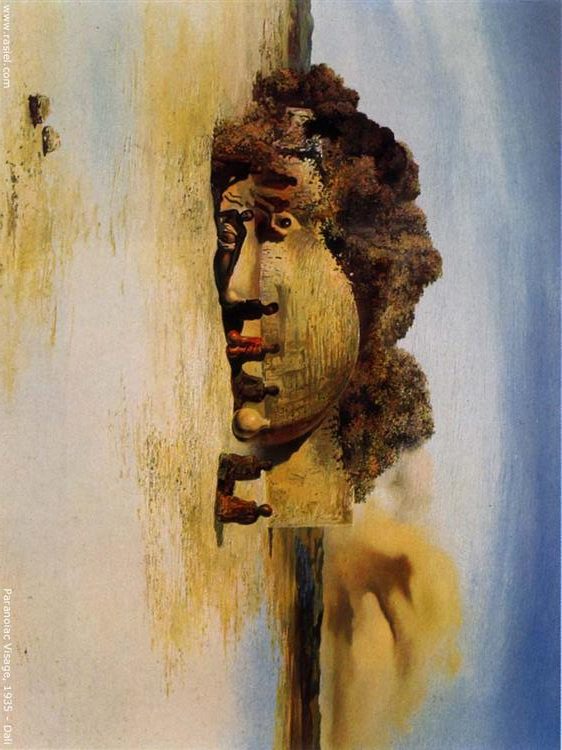Dali’s Visage paranoïaque from c1935 is a perfect representation of a number of fundamental holdings in McLuhan’s work. It is not too much to say that he has not been understood where these holdings have not first been understood:
- The “global village” is not in the first instance a spatial image. It is a foundational assemblage underlying all human experience including the experience of physical nature. Just as Dali’s vertical individual is a horizontal village, so all human experience of whatever sort is a surface manifestation or dynamic effect of an underlying spectrum of possibility. McLuhan’s ‘inclusive consciousness’ perceives these two together across their differentiating/discontinuous gap, just as the chemist perceives Mendeleev’s table of elements in every sample of physical material.
- The horizontal diachrony of history is just as much, and is first of all, the vertical synchrony of the spectrum of possibilities and of their laws of combination. “Time considered as sequential (left hemisphere) is figure and time considered as simultaneous (right hemisphere) is ground” (The Global Village, posthumous, p10).
- The consideration of any and all experience must be turned around from horizontal (conceptual) to vertical (perceptual). Figure and ground. But the former is not somehow less than the latter (less real, less valuable), it is the dynamic expression which belongs to it just as fundamentally as diamond and graphite belong to carbon.
- Furthermore, any notion of ground is itself a figure. The perpetual flip between the two, like that of cliché and archetype, is basic. Heraclitus: the way up and the way down are one and the same.
- In analogous fashion, all genitives in McLuhan’s work must be turned around from subjective to objective and objective to subjective. So, for example, the ‘experience of world’ is first of all a subjective genitive — ‘experience’ belongs to ‘world’, not ‘world’ to ‘experience’. At the ‘same time’, however, the possibility that ‘world’ can come to belong to ‘experience’ as an objective genitive — ‘experience of what? of ‘world’ — is a synchronic fatality to which we are perpetually exposed. Yet, this fatality is what gives birth to science and law and all the arts as critiques of the world as experienced. Heraclitus: The name of the bow (biós) is life (bíos), but its work is death.
- Again, all singulars in McLuhan’s work are plurals and vice versa. ‘The experience of world’ is many, indeed myriad, not one. At the same time, it belongs to grounding possibilities to express themselves in and as this or that individuated figure. No physical material can be more than one chemical formula at a time. Still, the manifestations of any ground are plural depending on the shapes and combinations into which it dynamically enters: “All processes whatever involve clusters of interacting effects with causes.” (Take Today, 1972, p13)
In the background of Dali’s Visage paranoïaque is the fateful shadow of Goya’s El Coloso:
For Dali and for McLuhan, as much as for Goethe, “Am Jüngsten Tag ist’s nur ein Furz!”



